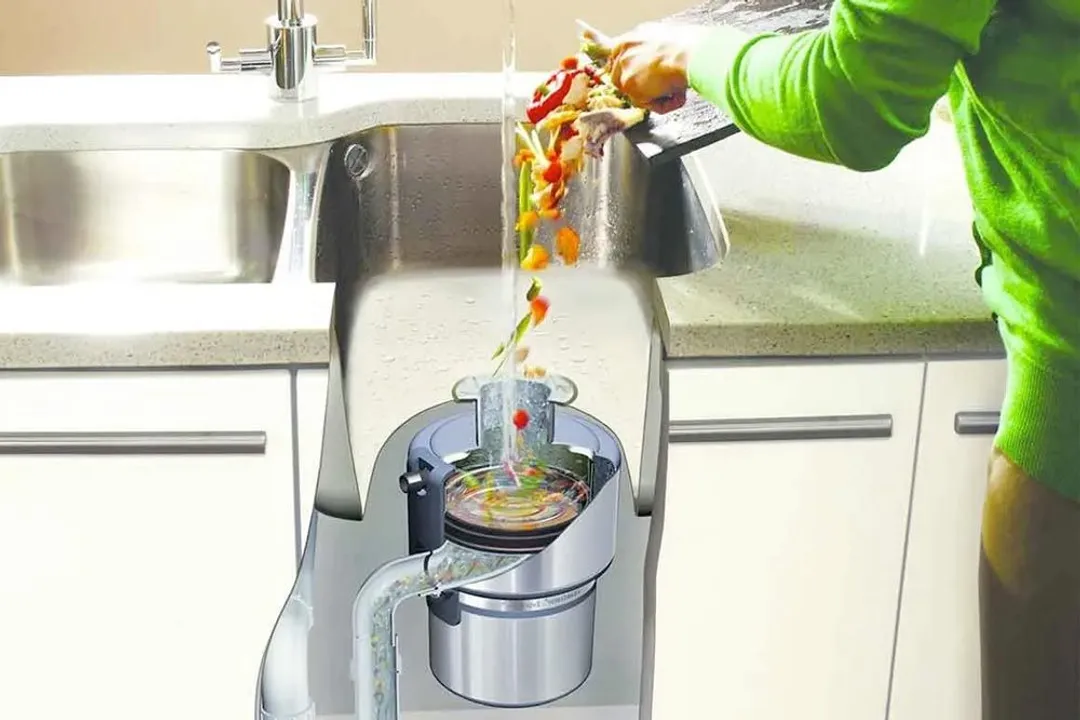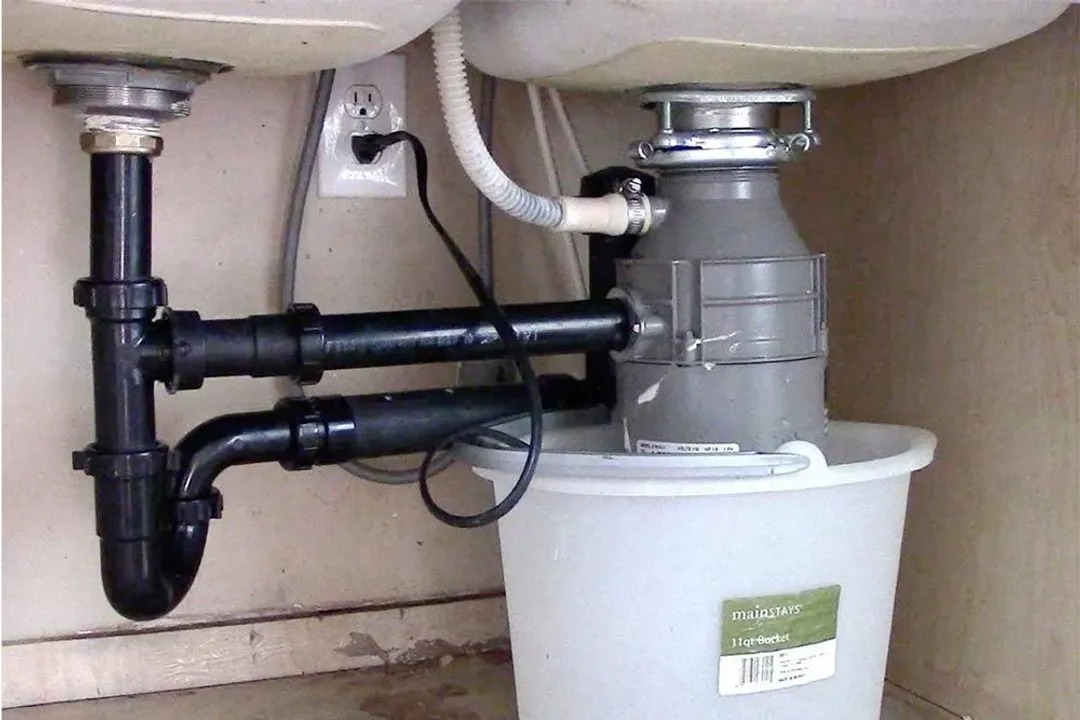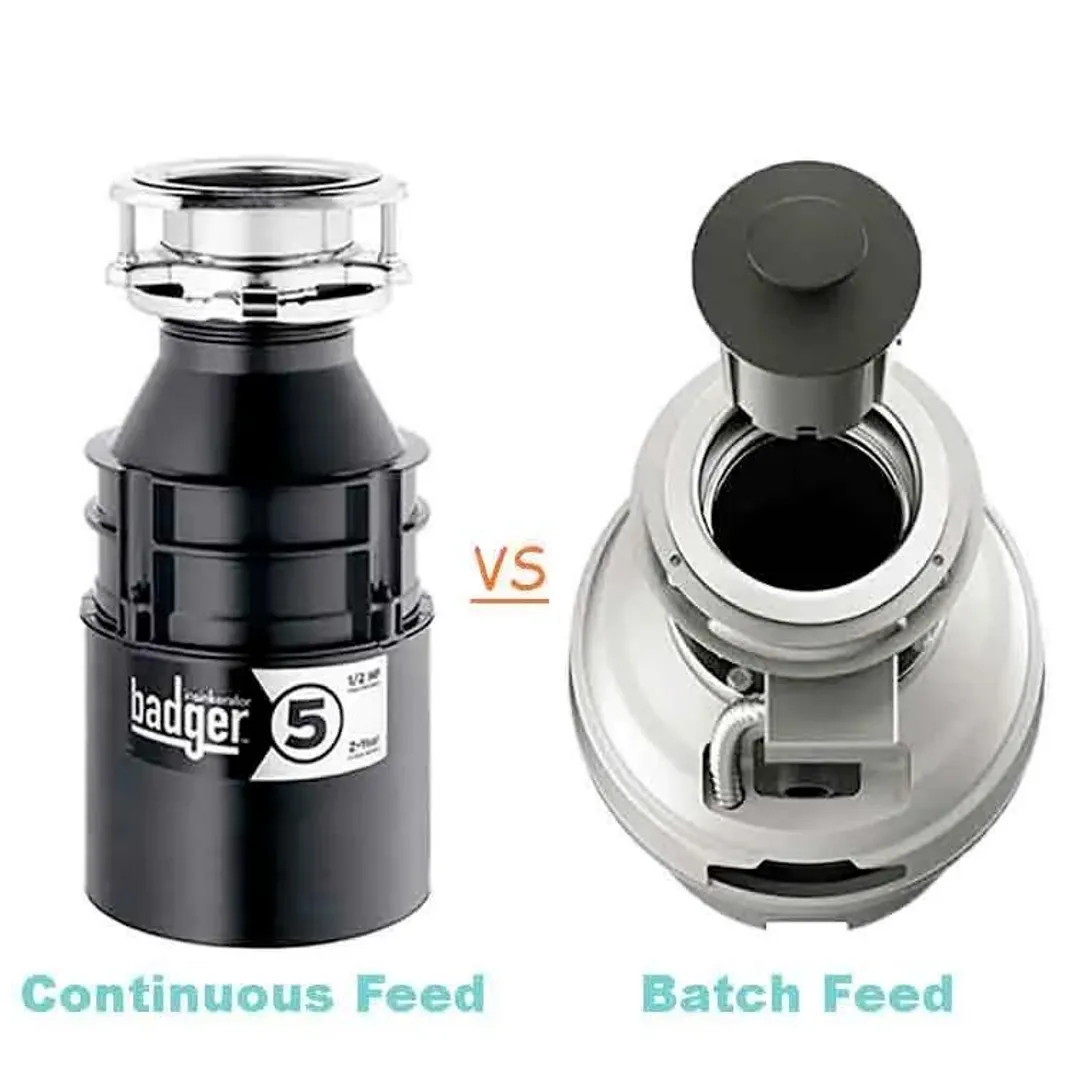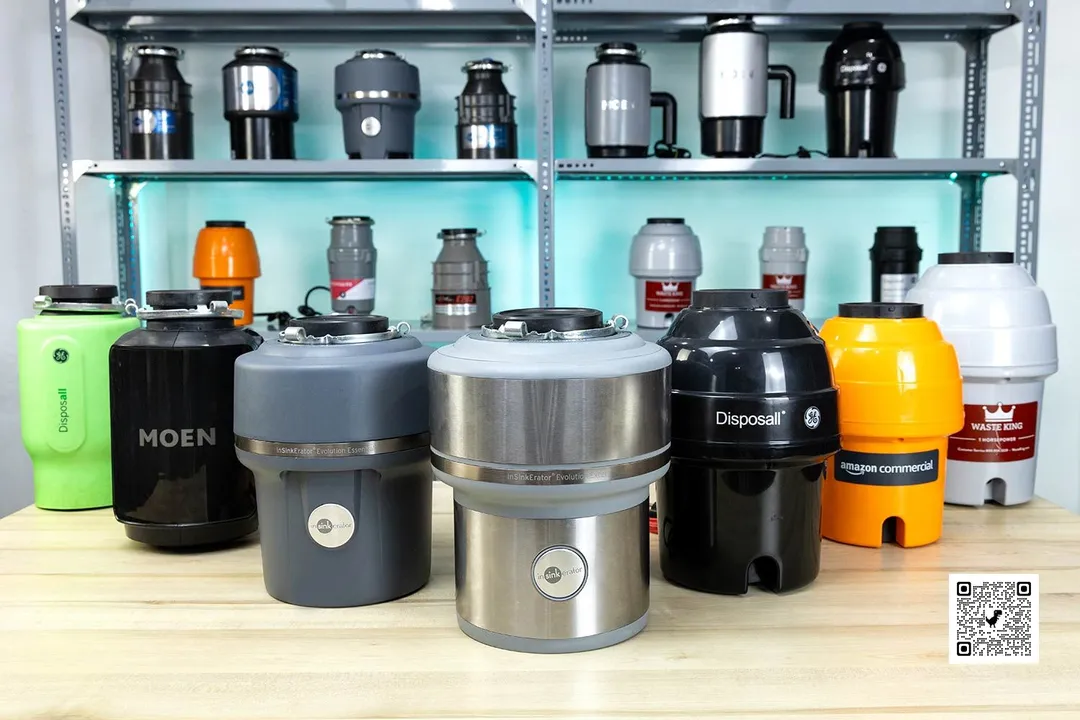Our recommendations are made independently through Research & Testing. We may receive commissions from purchases made via our links.
How to Repair Garbage Disposals
Humming/jamming and clogging are common among garbage disposals. It’d be handy to know how to repair a garbage disposal by yourself before calling for help.
Jamming and clogging are the two most popular problems of food waste disposers. Positively every single owner of these machines has encountered them at least once. And man, they sure are annoying.

Normally, we would send for plumbers right? They are the safest bet there is for these types of problems. But what if you don’t have time to wait for professionals? What if you want to save money? What if a friend needs help and there’s a chance for you to be the hero. Knowing how to repair garbage disposals would really come in handy one day.
And you know what’s even better? These jammings and cloggings are not hard to mend at all. Once you’ve understood what causes them and what you need to do, unless it’s a problem with the main pipeline system of the house, you’re gonna save a lot of money and time solving them yourselves.
Now, let’s get to it: let’s try to figure out what causes garbage disposals, all of a sudden, to act up like they do. Later we’ll see together what could be done to bring these issues to rest and prevent them from happening again (or at least take the number of occurrence down to minimum.)
Your Garbage Disposal Stopped Working?
Surprisingly (or not), in most cases, machines not working is nothing else but the users’ fault. For some reasons, many use their garbage disposals like a trash can. We need to understand something: garbage disposals are designed to deal with food waste and positively only food waste.
Sometimes the motor might seem strong enough to grind other things, but trying that will definitely damage the machine permanently. So don’t.
If you ever, out of rebellion or out of carelessness, feed the machine with a foreign object like a coin or a metal spoon or even a rubber band (basically anything that the machine can’t grind), do expect it to jam.
In other cases, some garbage disposals are weaker than others and require gentler hands to manage. Feeding garbage slowly and avoiding large loads of bones (or any bone at all, for that matter) or fibrous materials will be best. If the machine is overloaded, the circuit breaker will stop the operation to protect it/the motor.
To sum up, there are two common reasons why the machines are not working properly:
- Foreign objects stuck in the grind chamber
- Circuit breaker reacting to overloading
Your Garbage Disposal Is Clogged?
Well, clogging is a different story. While jamming is a mechanical issue, clogging lies more on maintenance. It’s the same thing with a sink without a disposal unit. When there’s too much debris building up, your drain will clog. The only difference is now your under-sink pipes have now got a really big piece in between.
It’s definitely not about strong and weak machines. Even if you have something like the Waste King L-8000 with a 1 HP motor, which is comparatively strong, but don’t put any efforts into managing the daily rubbish or into routine cleaning, clogs will definitely end up stacking.
Admittedly, stronger machines help produce finer ground results that reduce the risk of clogging. But ⅓ or ½ HP models don’t release big chunks into the drain either.
Dealing with clogs will not be about repairing, it will be more about cleaning and learning how to fundamentally care for the pipes and the unit.
How to Repair Garbage Disposals
After understanding the reasons, it should be easier now to mend these occurrences. But life is rarely so convenient. If these suggestions don’t work with your situation, do call for professional help.
Nonetheless, let’s just see how well we do first.
Troubleshooting a Garbage Disposal
There are two causes: whether the circuit breaker is tripped or something is stuck in between the plate and the ring. We need to be able to tell them apart since the way they each can be “untangled” is different.
If the machine suddenly stops mid-session and there isn’t any sound coming out of it, that means the power is shut off and you might want to take a look at the load you’re processing. It’s most likely the work of the circuit breaker.
If the machine cease to spin and hums when you try to turn it off-on then there’s something preventing the plate from spinning even though the motor is running.
- Circuit breaker reacting to overloading
With overloading, it’s simpler. You don’t need any tools. Basically, just wait for the machine to recover, realize that your machine has a limit and slow down the process from now on. Anyway, here’s what you should do.
- Switch the machine off.
- Look for the reset button (close to the bottom or under the unit). It should be extending out (about ¼ “ or 5 mm).
- Reset the garbage disposal by pushing the button in, then turn the machine on. If it doesn’t go in, let the machine rest for 10 minutes before putting it to labor again. (Even if it does stay put in the first try, we still recommend leaving it alone for a few minutes.)
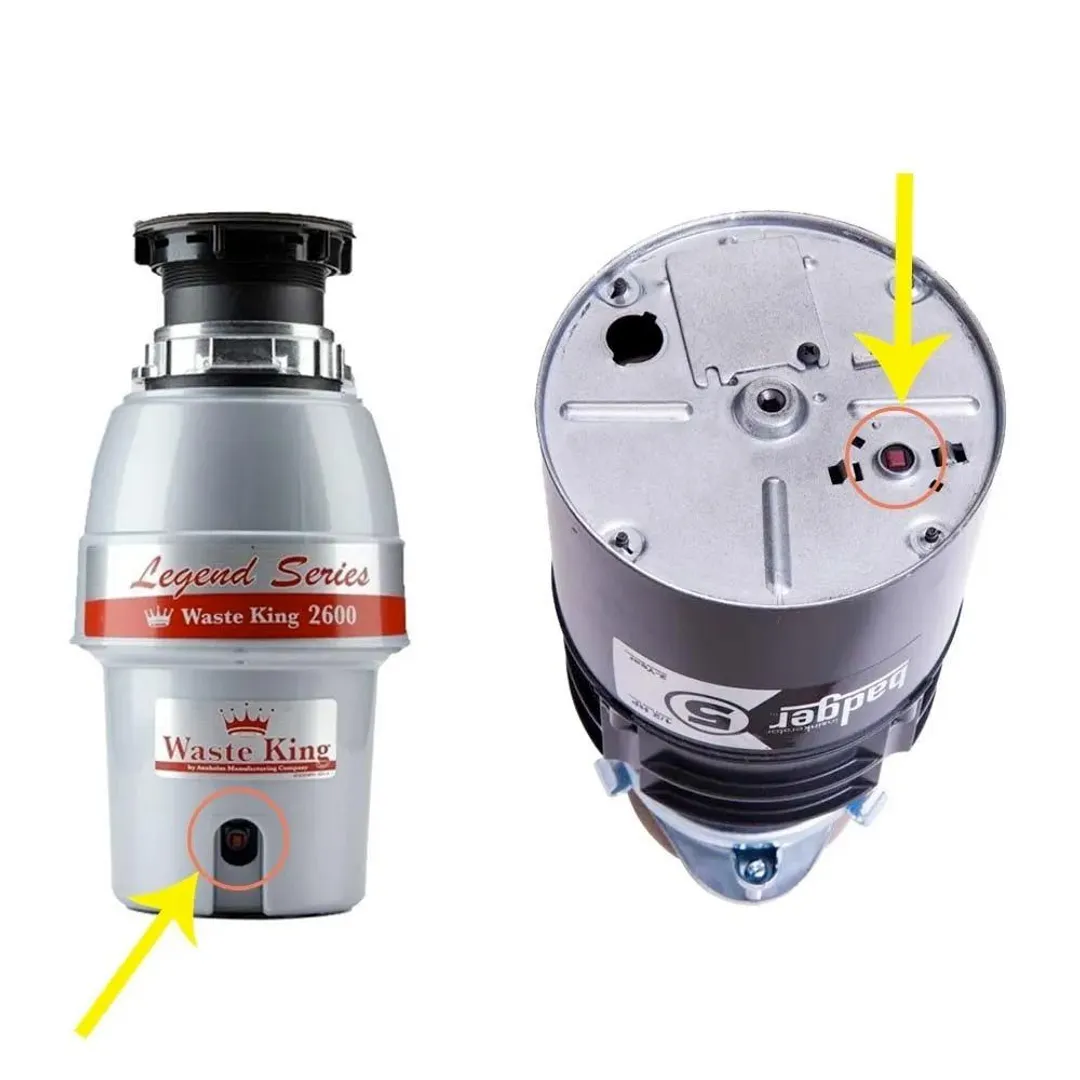
That should bring the food waste disposer back to normal.
- Foreign objects stuck in the grind chamber
If the machine hums, we need to remove obstacles from the chamber and unjam the thing manually.
Tools: Jam Buster wrench, flashlight, pliers or tongs.
- Turn off the machine. Make sure the power is cut off.
- Use the jam buster/ allen wrench (for unit with hex hole) or a long handled tool (for unit with NO hex hole).
- With the wrench: under the unit should be an hex hole where the wrench can go in. Work the wrench as a handle and turn the motor slowly (it’s okay to use some force if it doesn’t turn easily) until it rotates a whole circle in both directions. (the wrench is the optimal option) With the long handled tool: go inside the chamber through the collar and spin the spinning plate by the impellers (Waste King models have a hole for this purpose) until it rotates freely.
- Check the overload protector. If it’s tripped, you will see the button extending. Gently press it. If it does not go back in, let the machine rest for 10 minutes then try again.
- Look into the chamber with a flashlight. NEVER PUT YOUR HANDS IN THE MACHINE. Pay attention to the edge of the plate, where it meets the grind ring. Use a pair of tongs or pliers to remove any visual debris/ blockage. If the obstacles cannot be picked out with normal force, professionals are to be consulted.
- Turn on the water and try to run the machine. The chamber should rotate normally now. If not, repeat the steps.
Due to the nature of problem, you may need to perform the tasks several times.
If the garbage disposal continues to jam after many attempts, service is advised and warranty should be invoked.
Unclogging a Garbage Disposal
Even though the process of unclogging lies mostly in the maintenance, we’ll have to deal with the water and the bits floating in front of our eyes first. After that, we’ll talk about how our machines can be kept cleaned and functional for the longest time.
Step 1: Drain the sink.
If the sink is clogged, you’ll be looking at bits afloat. We need to deal with that first. After turning the machine off, either we can scoop/syphon the water into a bucket or we can use a plunger/plumber’s helper.
If there’s too little water, fill the sink up a bit more, about 2 inches (10 cm), and start plunging with moderate pressure (the sink is not as strong as the toilet.) Do that several times. If you’re lucky, that will unclog the disposal entirely.
If that’s not the case, at least you can move or break the blockage up a little, which will allow water to drain faster, and fish some of the debris out. Then we investigate it further down.
Step 2: Free the chamber
Later on, we’re gonna need the chamber to not jam on some unexpected piece of garbage (after plunging). There are other steps that require running the machine and we’d like to conduct those steps as smoothly as possible. Here’s what we’ll do:
- Use a flashlight to check inside and look for possible obstacles (bones, metal pieces, etc.) Pay close attention to the grind ring.
- Use pliers/tongs and pick them out. NEVER USE YOUR HANDS.
- Turn on and run the machine with a slow flow of water to check for jamming. If it does jam, refer to “troubleshoot a jamming/ humming garbage disposal” above.
Now, we go down a bit further to inspect the real scene of the crime.

Step 3: Clean the P-trap
It’s actually simple down here. All you have to do is remove and clean the P-trap or replace it all together. The only problem is it might get a bit messy and dirty.
Tools: bucket, paper towel, pliers, hands
Alright, here’s what you’ll do:
- Place a bucket and (paper) towel under the P-trap to catch any sludge spilling out.
- Loosen the two trap nuts (use hands with plastic or pliers with metal) and wiggle the trap out. Drain will pour down now.
- Look inside the trap (and possibly decide whether to replace with a new set) and clean out debris. Then rinse it with warm water.
- Take a look at the trap arm as well (the one reaching out of the wall) and clean it if possible.
- Reattach the trap and tighten the nuts (don’t twist it too hard)
- Turn your garbage disposal on and do a test run.
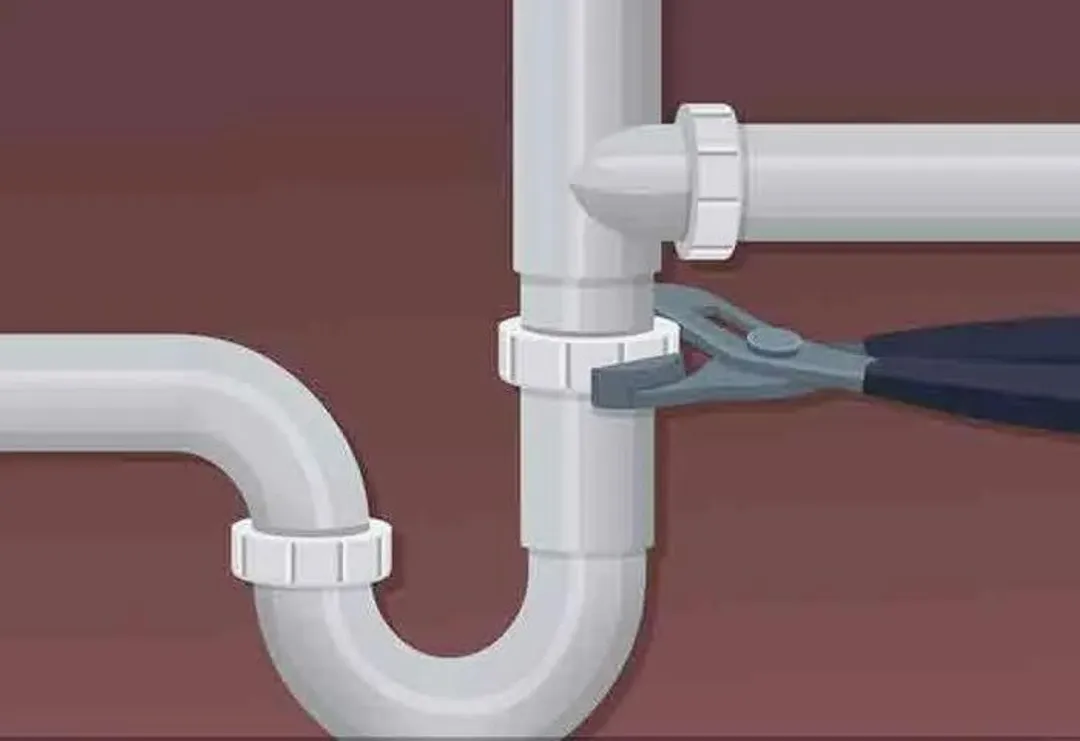
Now there’s nothing to impede the flow of water through the drain. So basically, we’re done!
If after all that work and the drain is still clogged up, time to get a drink, rest, then call for professional assistance. You did great!
Maintenance
The best way to deal with clogging and jamming is to never let it happen in the first place. Thus, after you’ve done everything, it’s good to keep in mind these DO and DON’Ts, and remind yourself every single time you turn on the machine that it’s actually really annoying when these problems happen.
Do
- First turn on cold water and THEN turn on the disposer. Continue running cold water for several seconds after grinding is complete to flush the drain line
- Avoid putting coffee ground down the drain.
- Occasionally clean the machine and drain.
Don’t...
1. ...pour grease or fat down the drain. Put it in a jar and dispose later in bins.

Keeping grease, fat or oily liquid in jars is optimal.
2. …use hot water when grinding. It’s OK to pour hot water mid session, however.
3. …fill disposer with too big a load of vegetable and/or fruit peels all at once.
4. …grind large amount of egg shells or fibrous material.
5. …turn the machine off too soon when grinding. Let it run an extra 10-20 seconds with running cold water.
And that’s all there is, folks! At the fundamentals, being mindful and cleaning the machine routinely should keep your unit functional for a long time.
In the worst scenario - your waste disposer is too old for maintenance to be of use, you might need some help to look for a new, suitable model. Take a look at our list of the best garbage disposals of 2023. Who knows, you might find your next disposal machine from just one click.
Hope this has been helpful and good luck with your future endeavors.
About your tip
Luna Regina is an accomplished writer and author who dedicates her career to empowering home cooks and making cooking effortless for everyone. She is the founder of HealthyKitchen101.com and HealthyRecipes101.com, where she works with her team to develop easy, nutritious recipes and help aspiring cooks choose the right kitchen appliances.
Be Nguyen is a writer and product reviewer. Being naturally curious about technology and its real-world applications, Be spent several years in university studying engineering before joining the team at HealthyKitchen101 where he disassembles, tests, and rates household appliances.



